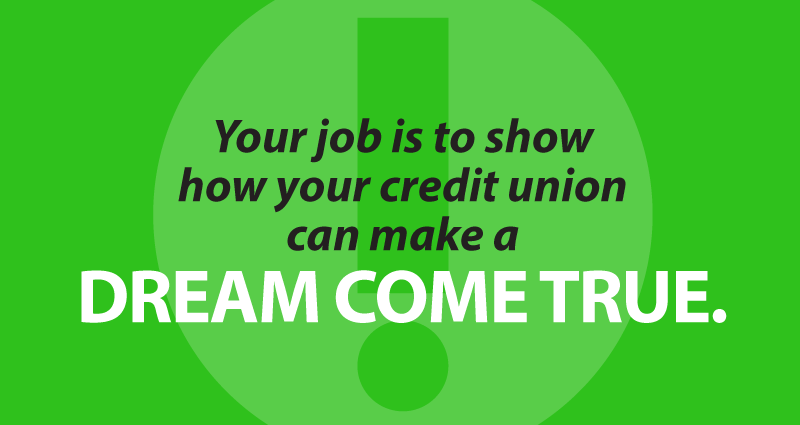
Dreams and decisions
Ultra-blogger Seth Godin points out that people are astonishingly bad at making decisions about money. For most of us, that’s hardly news.
But is it, where you work?
If you’re working at a credit union, you’re probably pretty good with dollars and cents. And you’re likely surrounded by people who are also pretty good with money, or at least basic accounting.
It’s all too easy to forget that most of your members and potential members have trouble with money.
At the store, they can have trouble deciding which package of toilet paper is better to buy. For them, the real-life differences between mortgage “A” and mortgage “B” might as well be written in ancient Sanskrit. Even if a member is good at math, or you provide the numbers for them, making the right financial decision can still be extraordinarily difficult.
When you forget this, as many do, you end up marketing to yourself.
An ad with a giant rate in the middle is the usual symptom. It’s just a number without context — is that a good rate? Is that a rate I can actually get? What’s the catch? How much difference does that rate really make? Most people don’t know because most people don’t work at credit unions.
Seth’s solution for number-addled consumers is to translate benefits into your personal choices, dreams, and story. In other words, what might that $500 stereo or $200,000 college degree add or subtract from your life? You still start with a number, but you make it real by framing the decision in terms of what experiences you’re giving up vs. what you’re gaining.
As marketers and communicators, it’s our job to help people with this process.
We have to position our products and the related decisions in terms regular people understand — dreams, experiences, and identity.
Anyone can print a number in the paper. Your job is to show how your credit union can make a dream come true.
- OMG! Managing Your Google Business Profiles - August 5, 2024
- When it’s time to DIY and when it’s time to call a pro - July 16, 2024
- Credit Union Website Best Practices #2: Simplicity - June 11, 2024
